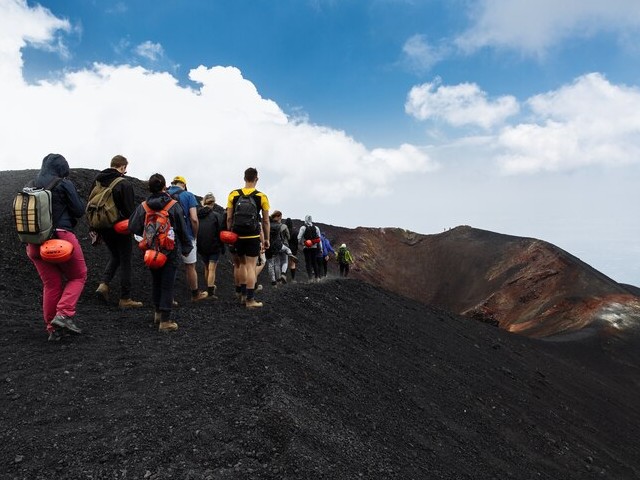Handling Altitude Sickness On Kilimanjaro Summit Day: Your Guide to a Successful Ascent
At Kilimanjaro Centre for Trekking and Ecotourism (KCTE), we understand the allure of reaching the summit of Mount Kilimanjaro, the roof of Africa. However, the journey to Uhuru Peak is not just a test of physical strength but also of altitude acclimatization. Altitude sickness is a common concern among climbers, and how you handle it can make or break your summit success. This blog post will guide you through understanding, preventing, and managing altitude sickness, ensuring a memorable and triumphant Kilimanjaro experience.
What is Altitude Sickness and Why is it a Concern on Kilimanjaro?
Altitude sickness, also known as acute mountain sickness (AMS), occurs when you cannot get enough oxygen from the air at high altitudes. This results in symptoms such as headaches, nausea, dizziness, and fatigue. On Kilimanjaro, altitude sickness is a significant concern due to the rapid ascent profiles and the extreme altitude that can affect even the most experienced trekkers.
Recognizing the Symptoms of Altitude Sickness
Early Signs
- Headache
- Nausea
- Dizziness
- Fatigue
- Loss of appetite
- Disturbed sleep
These symptoms can occur as you climb higher and the air becomes thinner. Recognizing them early is crucial in managing your ascent and ensuring safety.
Preventive Strategies for Altitude Sickness
Gradual Acclimatization
The best way to prevent AMS is by allowing your body to acclimatize to the altitude gradually. At KCTE, we recommend choosing routes that offer a slower ascent and more days on the mountain. Routes like the Lemosho and the Machame allow for better acclimatization and thus a higher success rate.
Stay Hydrated
Dehydration is a common catalyst for altitude sickness. Drink plenty of fluids; aim for 4-6 liters per day. Water helps increase the oxygen levels in your blood, essential at high altitudes.
Balanced Diet
Eating a balanced diet rich in carbohydrates provides the energy needed for the climb and aids in acclimatization. Our KCTE meals are designed to maximize your energy and improve your ability to acclimatize.
Avoid Alcohol and Smoking
Alcohol and tobacco can increase the risk of dehydration and affect your body’s ability to acclimatize. Steering clear of these substances can enhance your body’s response to higher elevations.
Managing Symptoms on the Move
Medication
Medicines like Acetazolamide can be used to prevent and reduce the symptoms of altitude sickness. Consult with a healthcare provider before your trip to discuss its benefits and usage.
Listen to Your Body
Recognize the signs your body is giving you. If symptoms are worsening, it may be necessary to halt your ascent and rest. Our KCTE guides are trained to monitor climbers for any signs of severe altitude sickness and will make the necessary decisions, prioritizing your health and safety.
Oxygen Boost
In some cases, supplemental oxygen may be required. It’s essential to discuss this option with your guide. At KCTE, we ensure that emergency oxygen is always available for situations where it’s needed.
The Role of a Skilled Guide Team
Our KCTE guides are not only experts in navigating the terrain of Kilimanjaro but are also trained to handle altitude sickness. They perform regular health checks and make critical decisions about each climber’s ability to continue the ascent. Trusting and following their advice is crucial for a safe climb.
Summit Day: Conquering Kilimanjaro with Confidence
Summit day on Mount Kilimanjaro is both the most challenging and the most rewarding. Starting your trek around midnight, amid the cold and reduced oxygen levels, can make altitude sickness symptoms more pronounced. However, following the aforementioned guidelines and relying on the expertise of your KCTE guide team maximizes your chances of standing at the peak without succumbing to AMS.
FAQs: Handling Altitude Sickness on Kilimanjaro
Can altitude sickness be prevented?
While not entirely preventable, the severity of symptoms can be significantly reduced through gradual acclimatization, proper hydration, diet, and following guide advice.
What is the best way to acclimatize?
Opting for a longer route with more days spent at moderate altitudes helps in better acclimatization.
How do I know if I should stop my ascent due to altitude sickness?
Severe symptoms such as intense headache, vomiting, and difficulty walking straight are signs that you should consider descending. Always consult with your guide.
Are there any long-term effects of altitude sickness?
If managed properly, there are no long-term effects. However, severe cases, if not addressed timely, can lead to complications.
Conquer Kilimanjaro with KCTE
Embarking on a journey to the summit of Kilimanjaro is an exhilarating experience that requires preparation and awareness about the risks of altitude sickness. At Kilimanjaro Centre for Trekking and Ecotourism (KCTE), we provide expert guidance and support to ensure you have a safe and successful climb. Ready to take on the challenge? Book your Kilimanjaro climbing adventure with us today and reach the roof of Africa with confidence and health!
Remember, the summit is not just a place, but a journey of resilience and determination. Join us at KCTE, where your dream of conquering Kilimanjaro becomes a reality.




